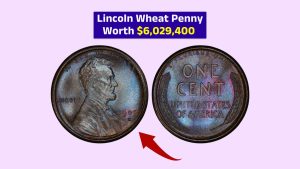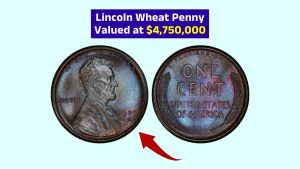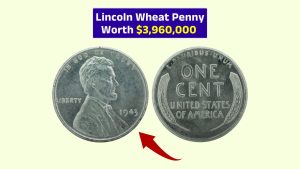Many people don’t realise they could be holding a small fortune in their pockets, wallets, or coin jars. A rare Lincoln Wheat Penny, which looks just like any other old coin, has been valued at an unbelievable $100,000—and it’s still out there in circulation. That means anyone could stumble across one without even knowing it.
History
The Lincoln Wheat Penny was first introduced in 1909. It was the first U.S. coin to feature a real person, Abraham Lincoln, on the front. On the back were two ears of wheat, which gave the coin its name. These pennies were produced until 1958, before the design was changed to the Lincoln Memorial.
Even though they stopped making these coins decades ago, many are still floating around in piggy banks, coin jars, and even in your change from the store. While most of them are only worth a cent or two, certain rare versions can fetch thousands—or even $100,000—if you’re lucky.
Value
Not all Lincoln Wheat Pennies are worth big bucks, but some are incredibly rare. One specific penny has been valued at $100,000 because of a combination of its date, condition, and production quirks. Collectors go crazy for these kinds of coins.
A famous example is the 1943 copper Lincoln Wheat Penny. During World War II, the U.S. government switched penny production from copper to steel to save copper for the war. But a small batch of 1943 pennies were mistakenly made from copper. Those copper pennies are now some of the most valuable in the world.
Another example is the 1909-S VDB penny. It was one of the very first Lincoln pennies ever made and only minted in small numbers. If you find one of these in good condition, you could be holding thousands of dollars in your hand.
Clues
So how do you know if you’ve got one of these valuable coins? First, check the date. You want to look for pennies made between 1909 and 1958. That’s the era of the Wheat Penny design.
Next, look under the year on the coin. You’ll see small letters like “S” or “D,” which stand for San Francisco and Denver, the locations where the coins were minted. Pennies from certain mints are rarer than others.
Also look for the letters “VDB” near the bottom rim on the back of some 1909 coins. These were the initials of the coin’s designer, and they were only included on a limited number of coins before being removed due to public backlash.
Minting errors are another giveaway. If your penny has a strange color, a double print, or looks off-center, it could be worth more than you think.
Circulation
Here’s the wild part—these valuable coins are still out there. A lot of people don’t even look at their pennies closely. That means one of these rare coins could easily be sitting in a jar at home or handed to you as change at the store.
Some people have even made it a hobby to go through rolls of coins from the bank just to find one of these hidden gems. You don’t need to be a professional collector to get lucky—you just need a good eye and a little curiosity.
Opportunity
The Lincoln Wheat Penny may seem like an old, forgotten coin, but it could secretly be a treasure. With one version recently valued at $100,000 and still potentially in circulation, it’s a good reminder to pay more attention to your change.
So before you toss your next handful of coins in a drawer, take a second and look a little closer. The next great coin finding might just happen in your own home.
FAQs
What is a Lincoln Wheat Penny?
A penny made from 1909 to 1958 with wheat stalks on the back.
Why is the 1943 copper penny valuable?
It was mistakenly made from copper during a wartime metal shortage.
How do I identify a valuable penny?
Check the date, mint mark, and look for unique features or errors.
Are valuable pennies still in circulation?
Yes, rare pennies can still be found in everyday pocket change.
Where can I check my penny’s value?
Visit a coin shop or use a coin grading service for an appraisal.



